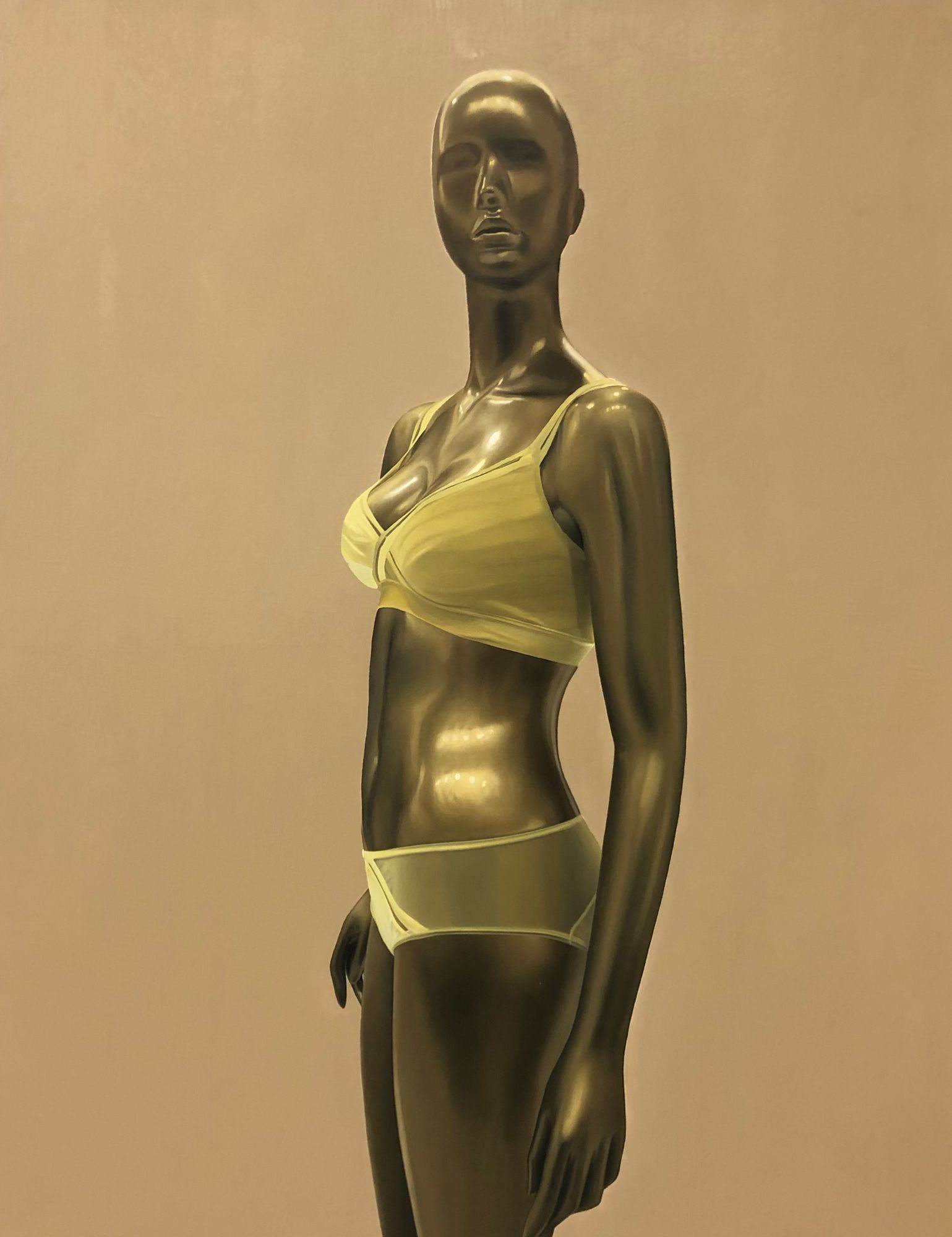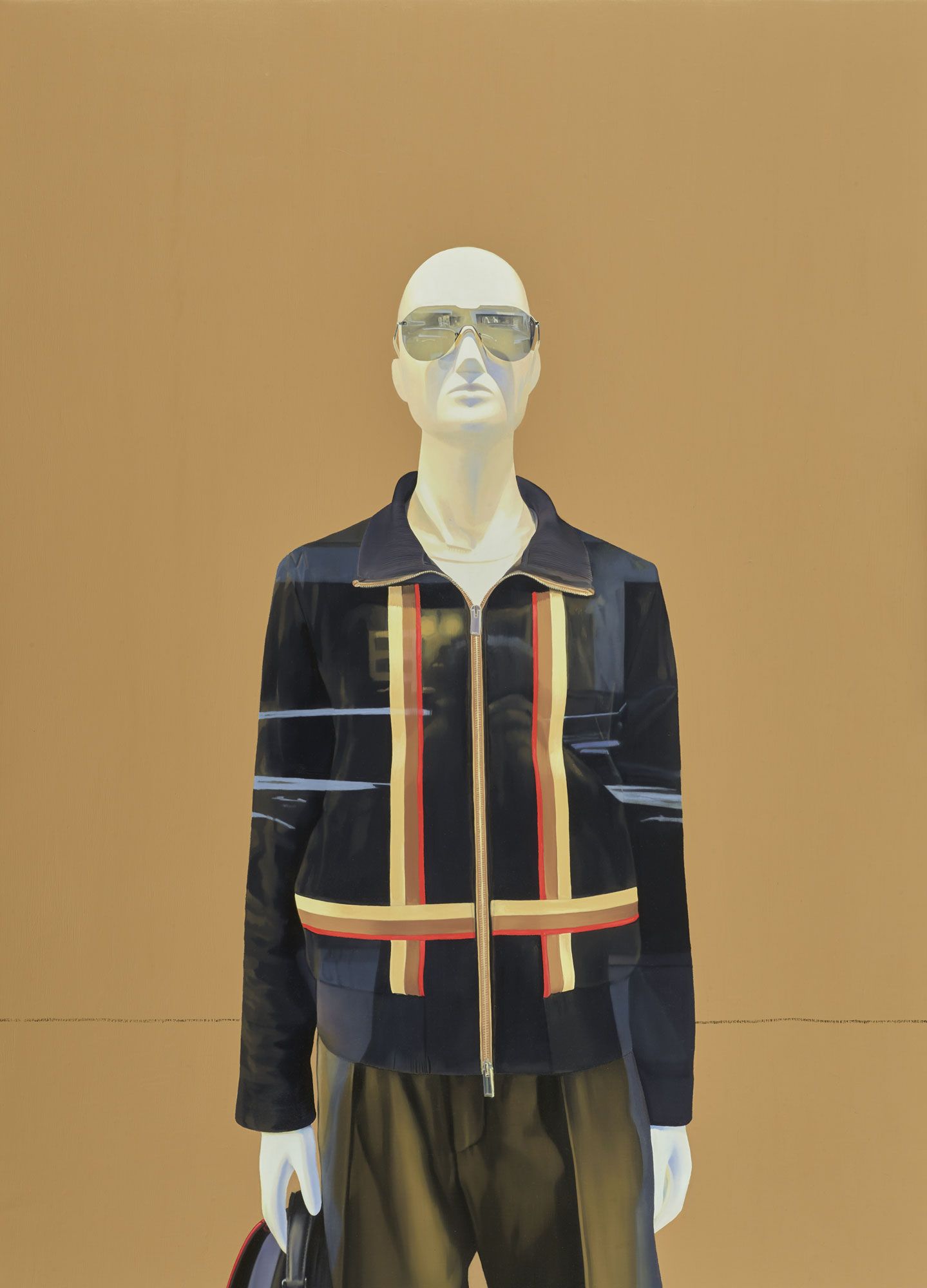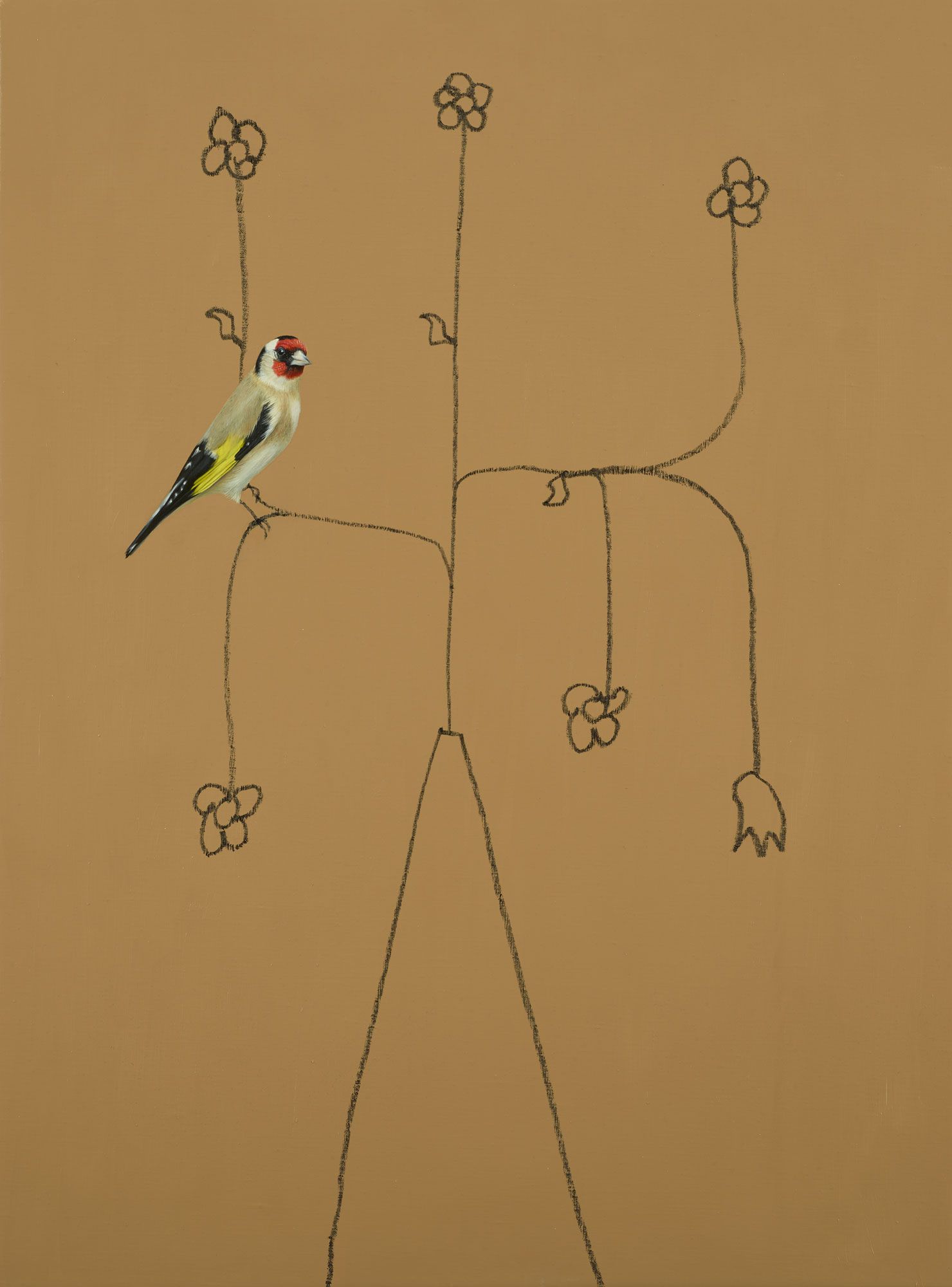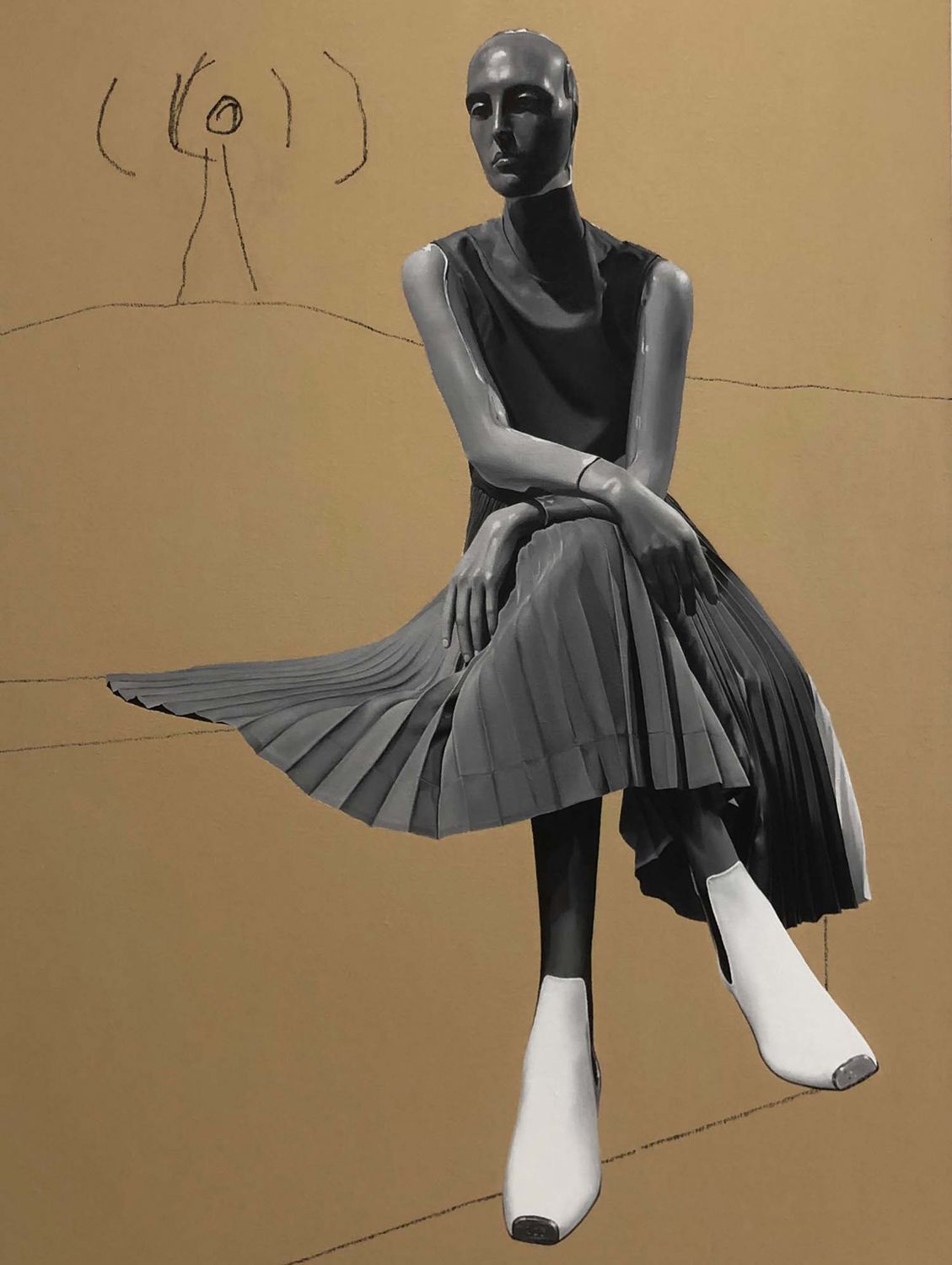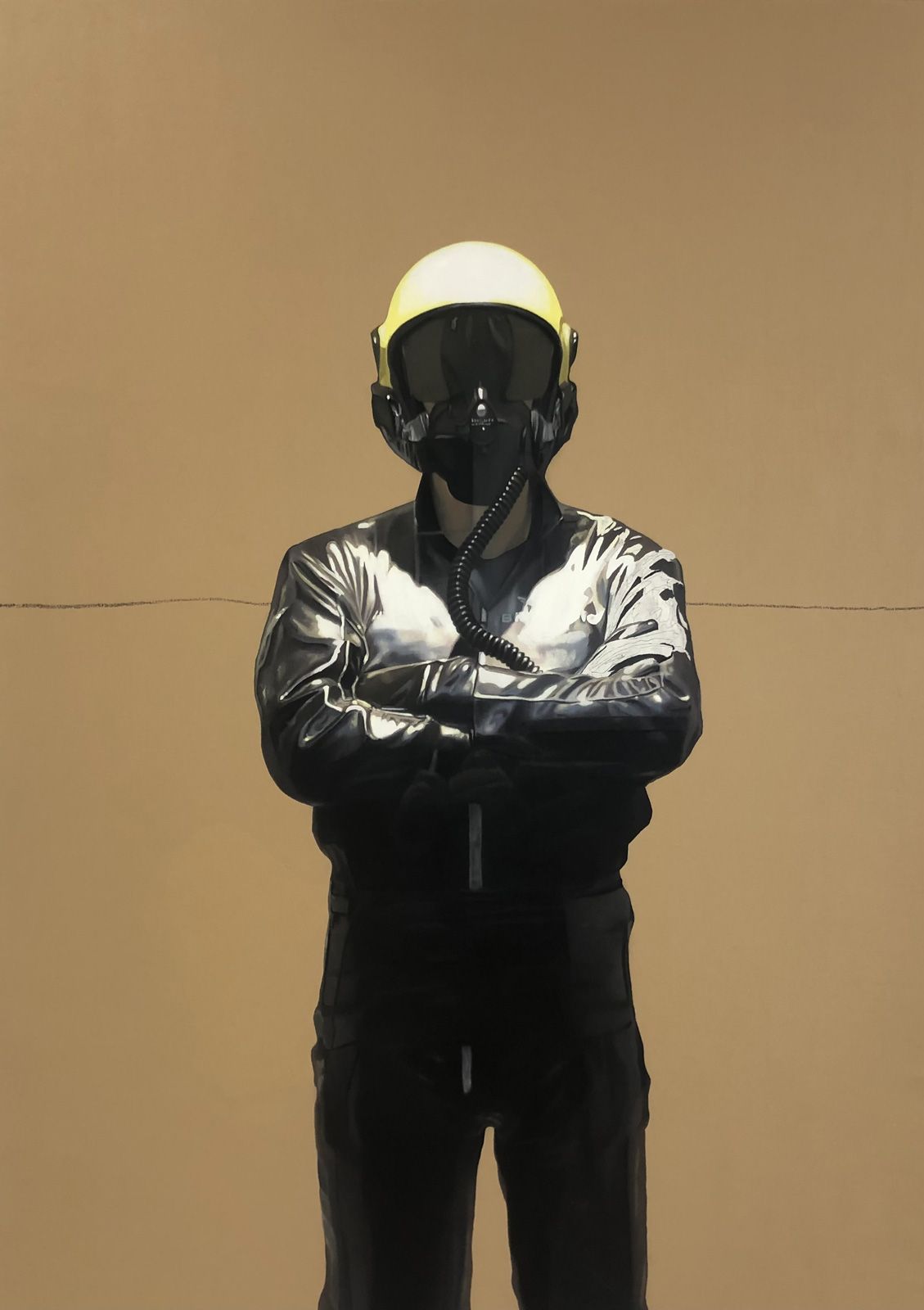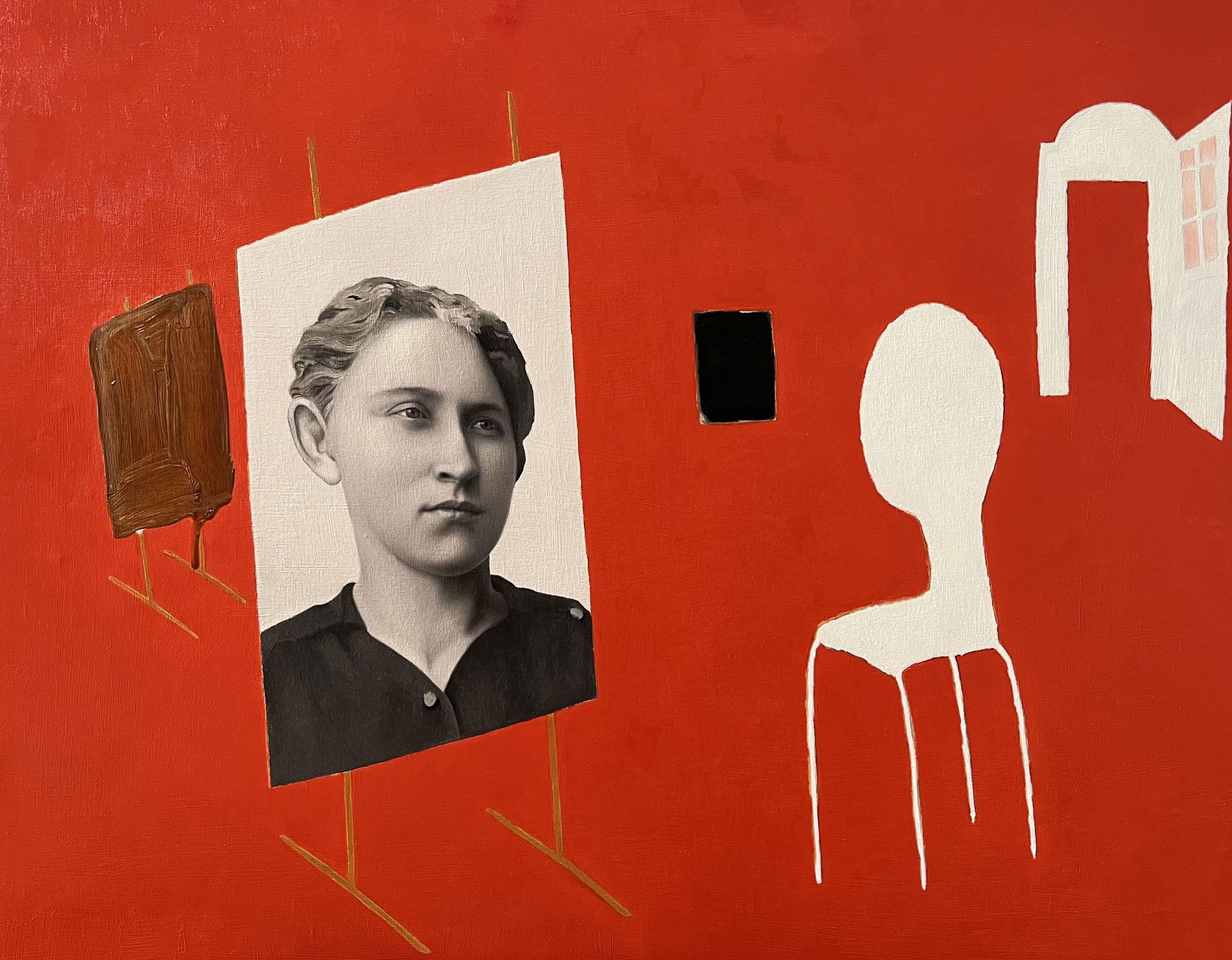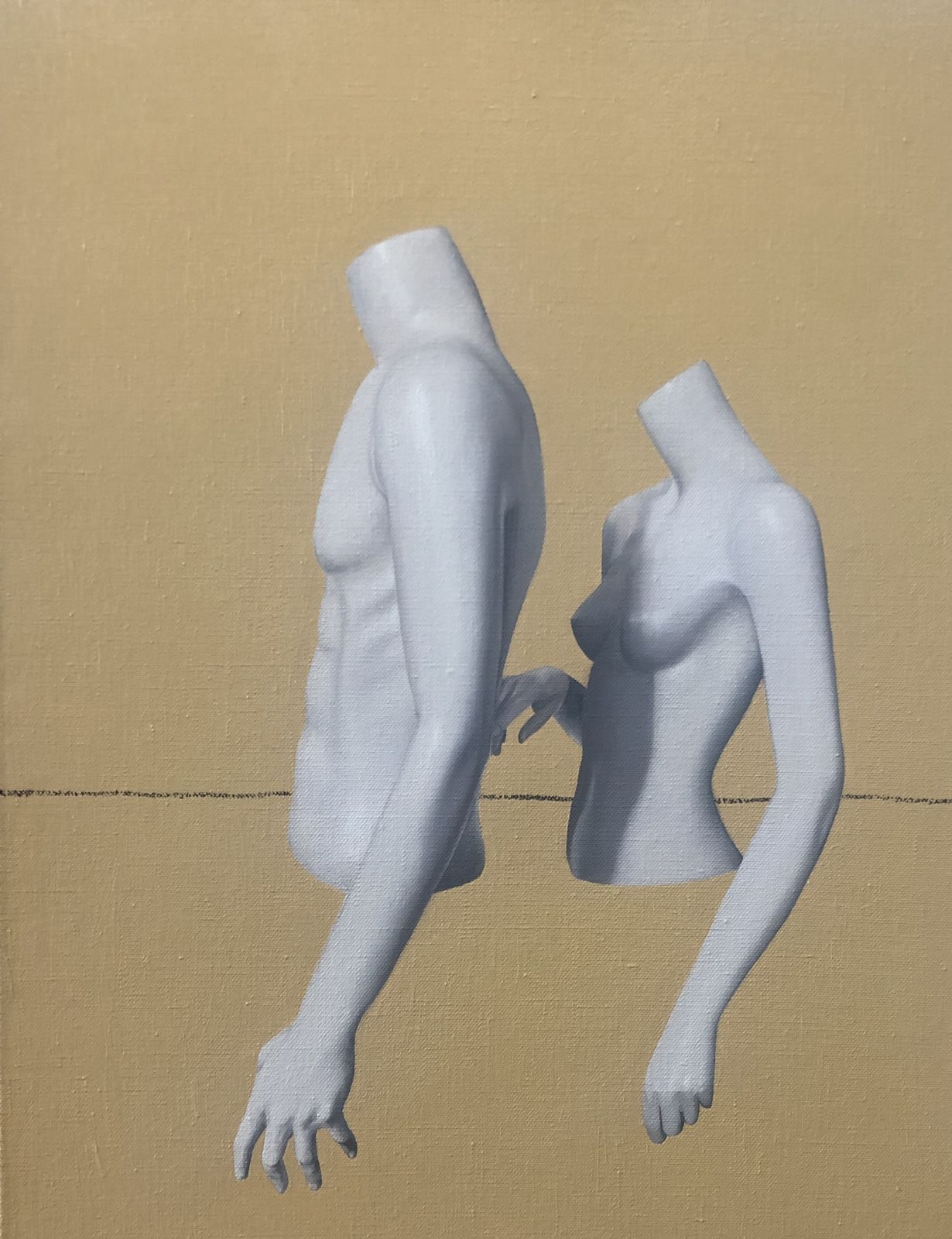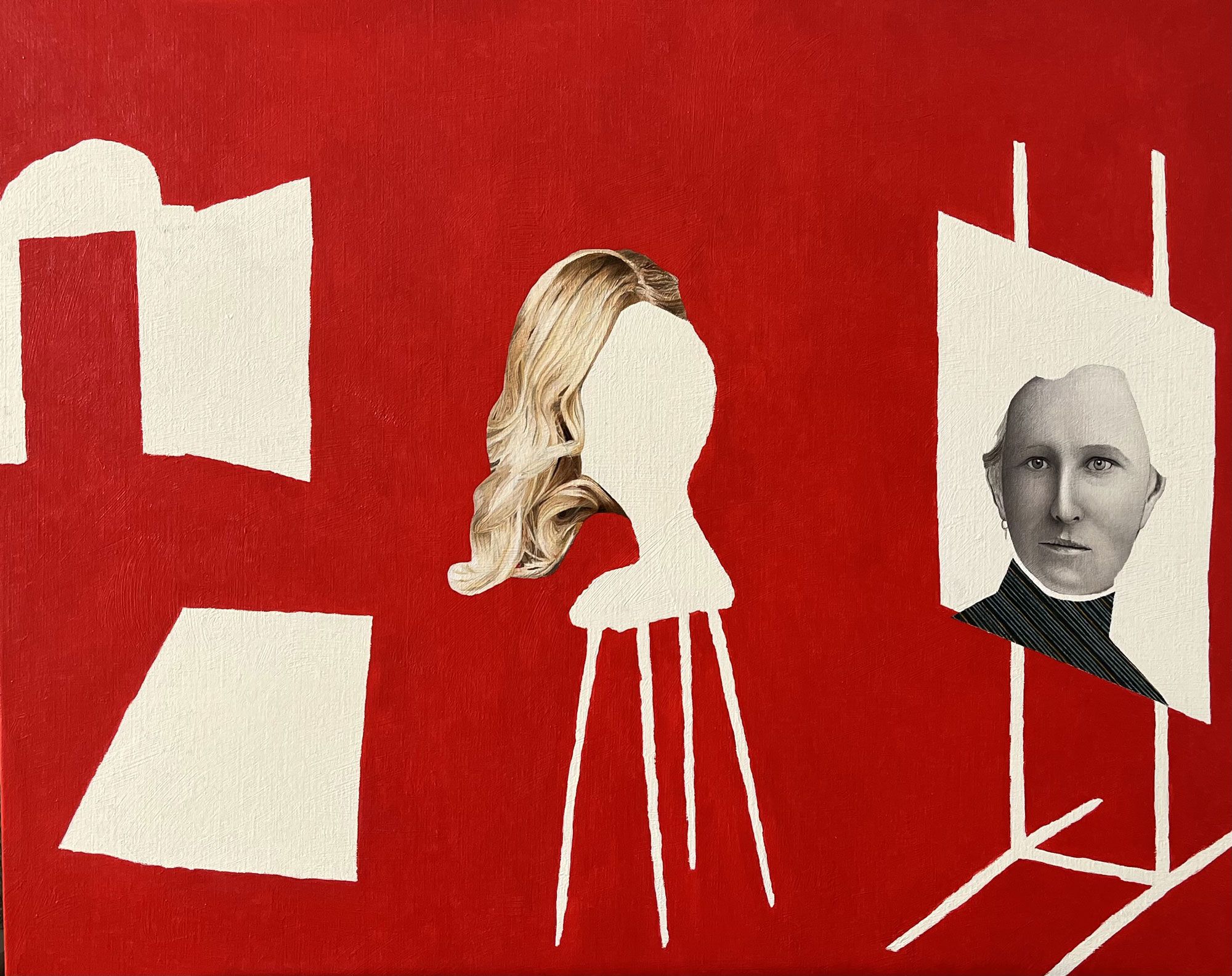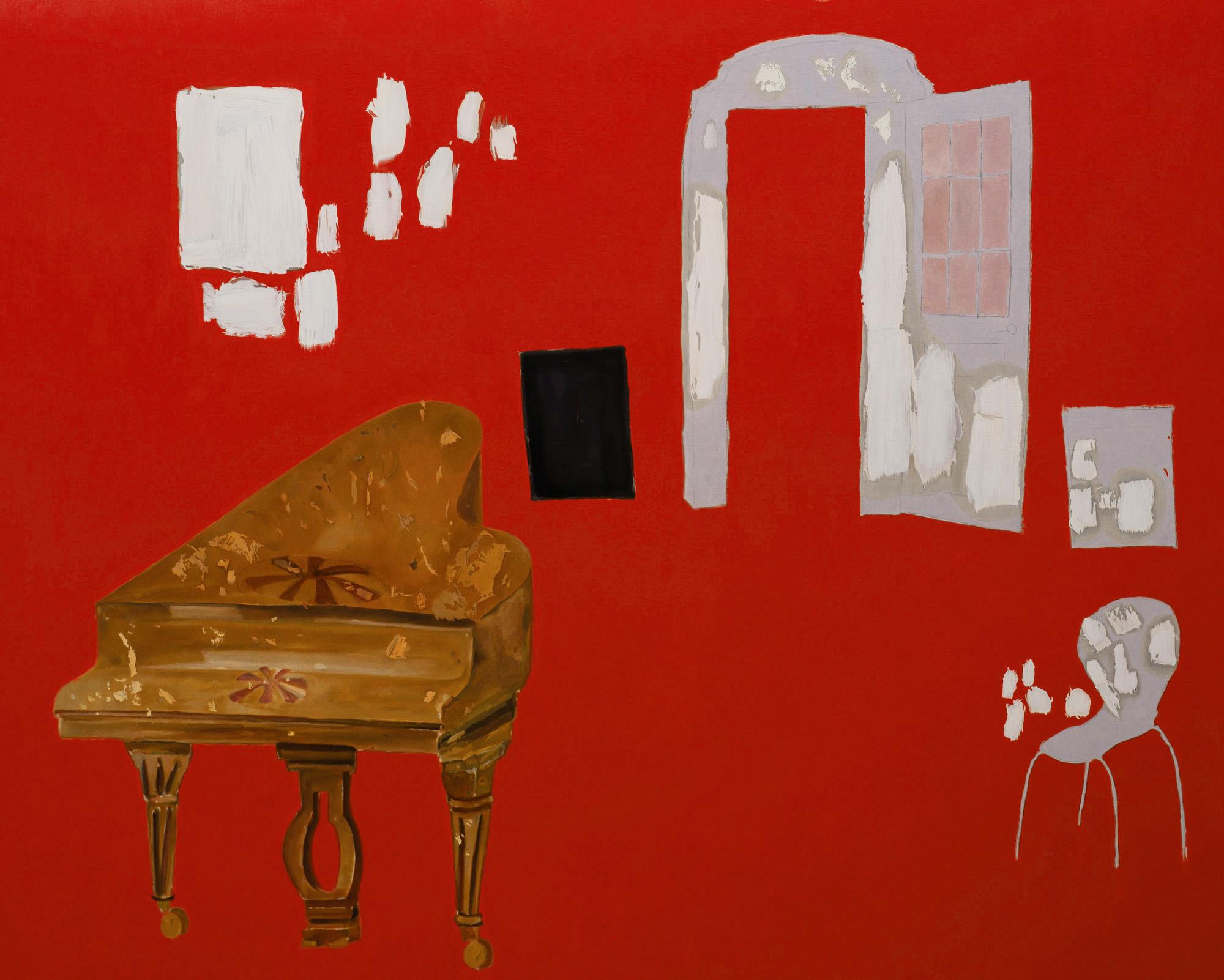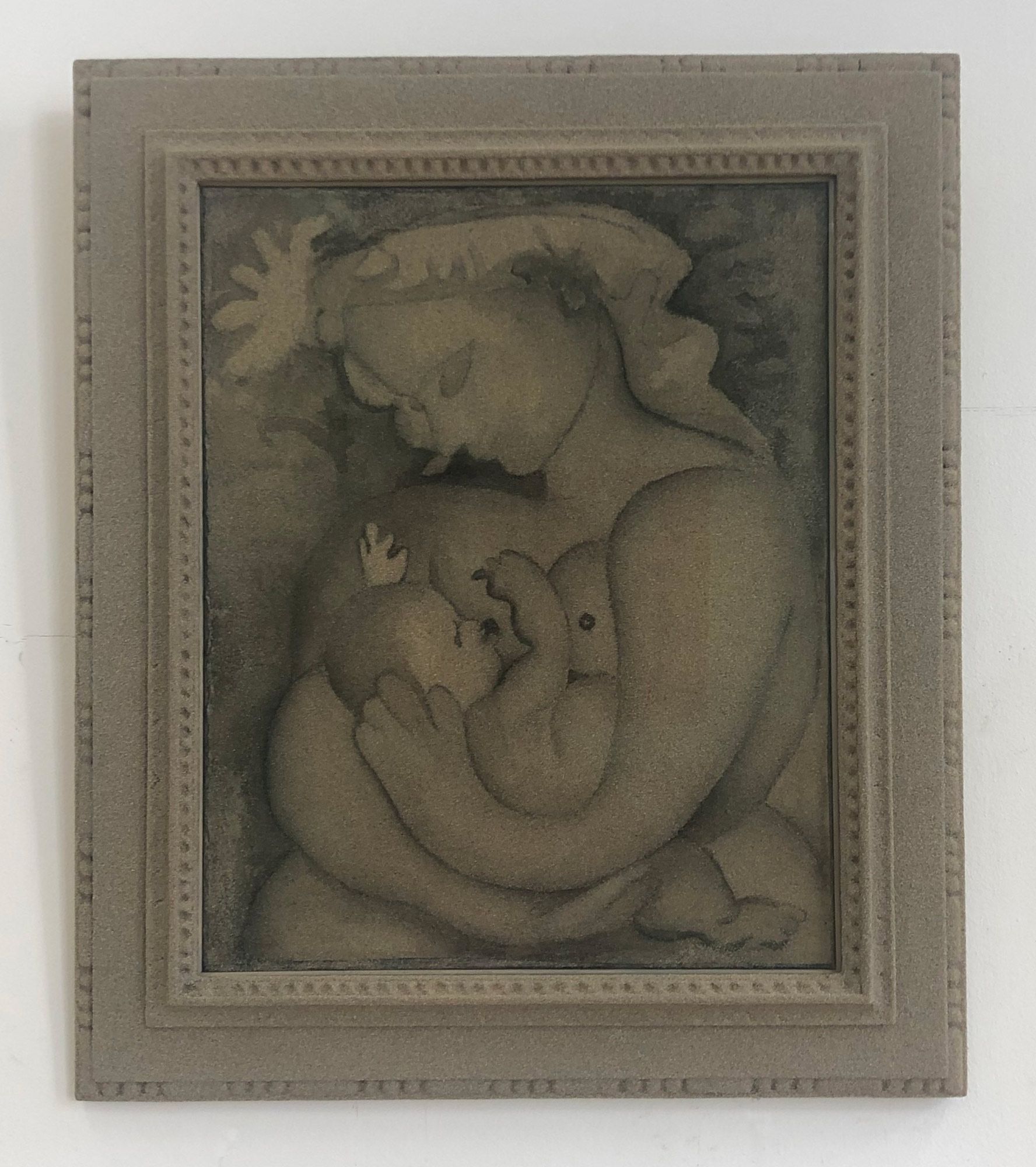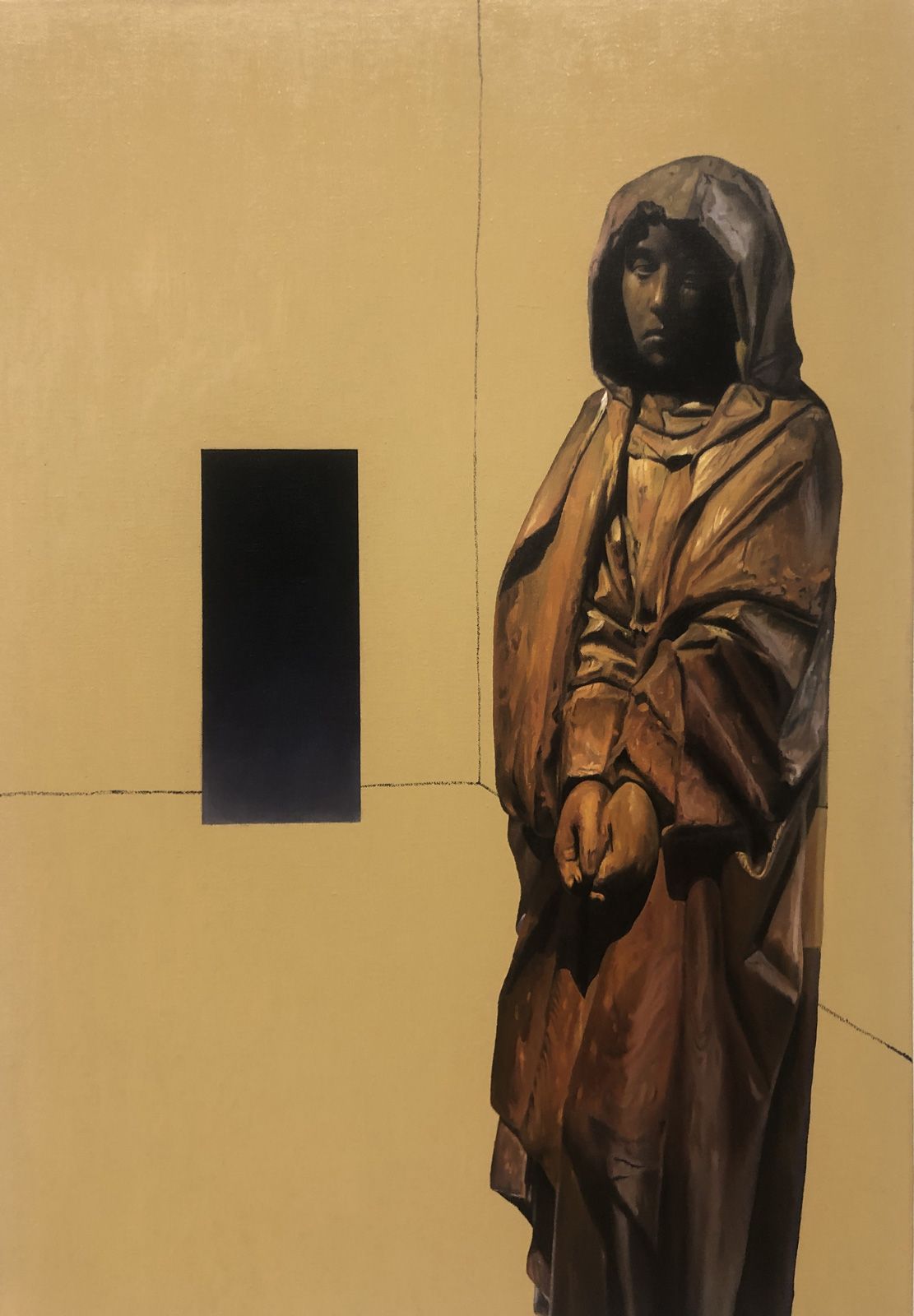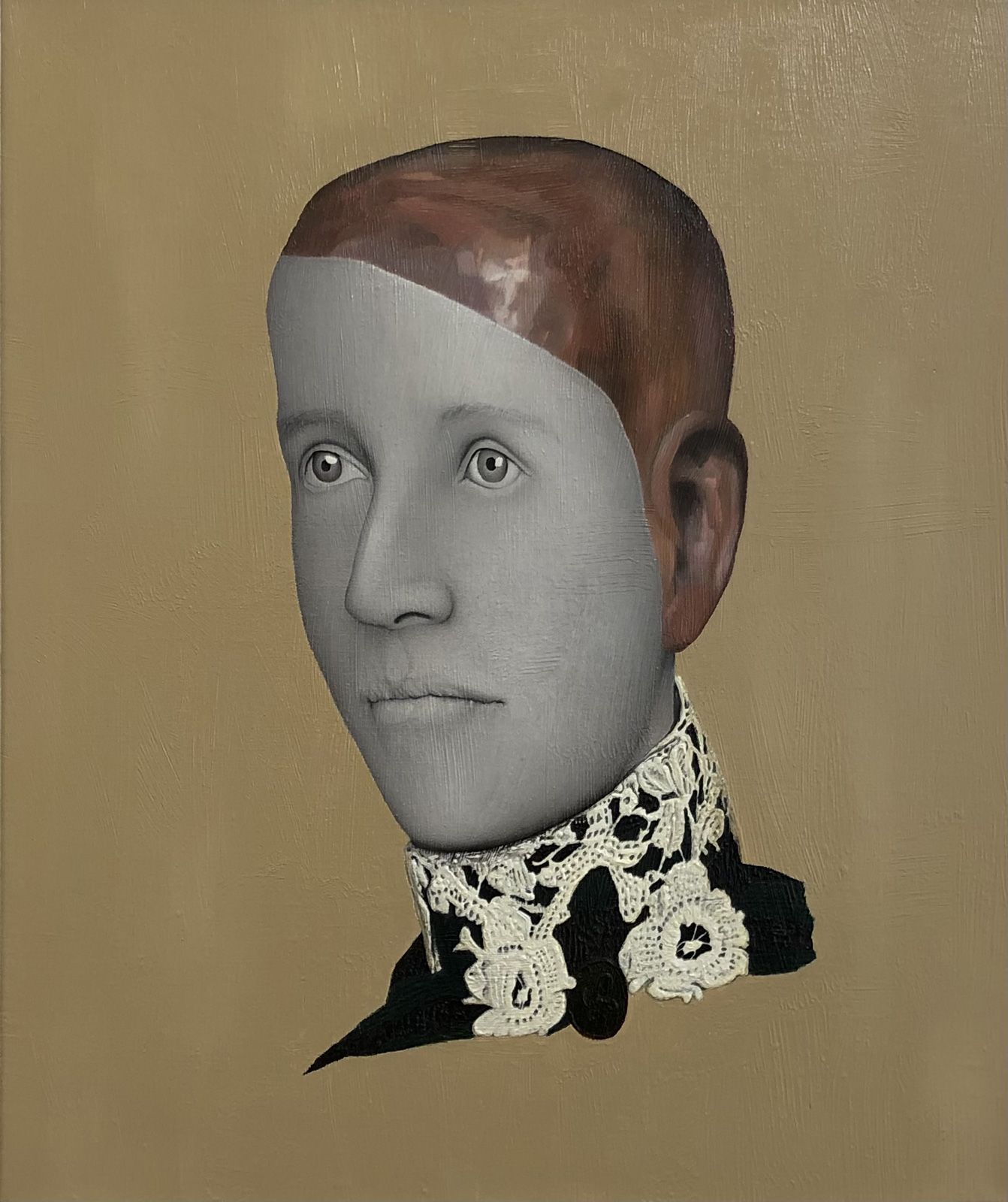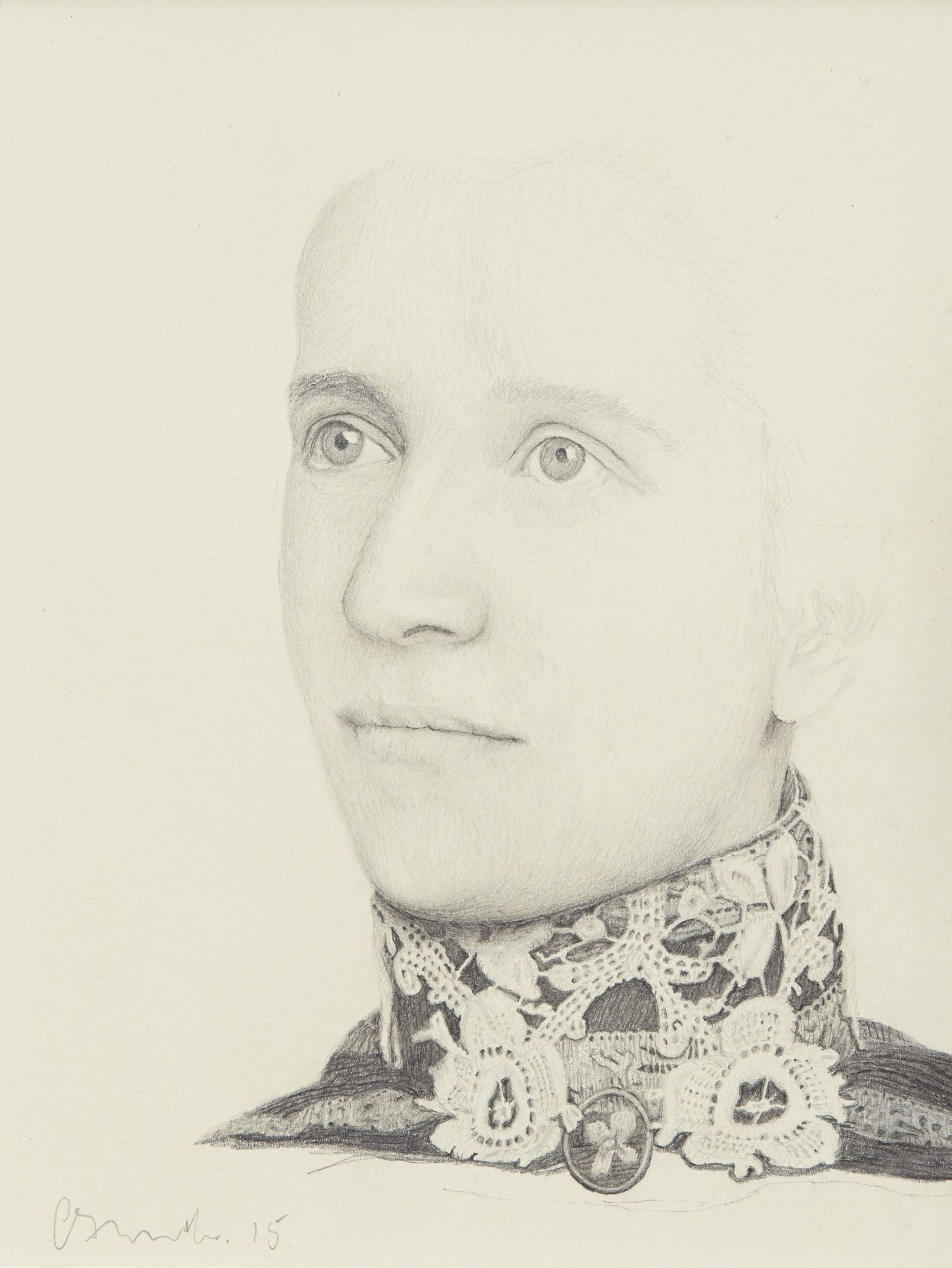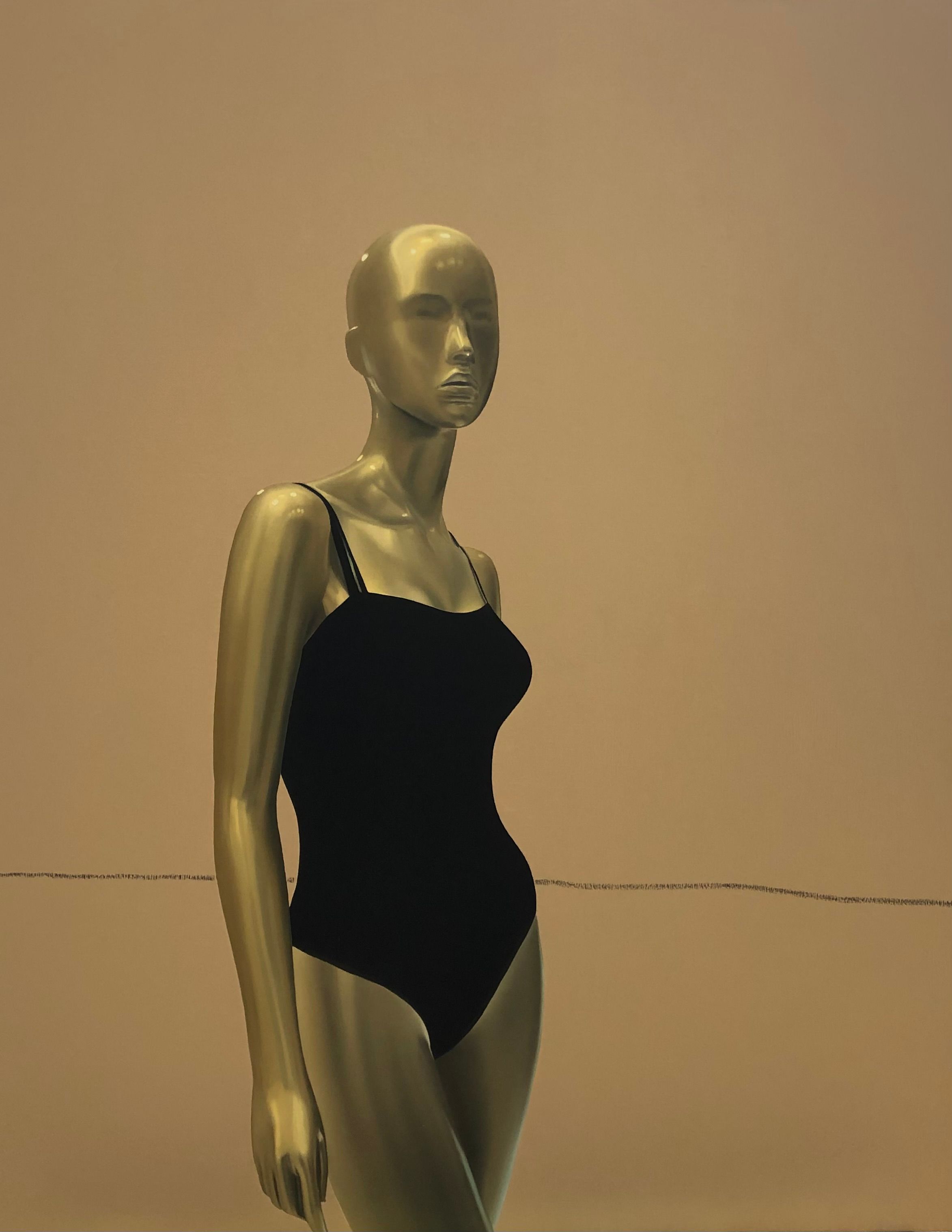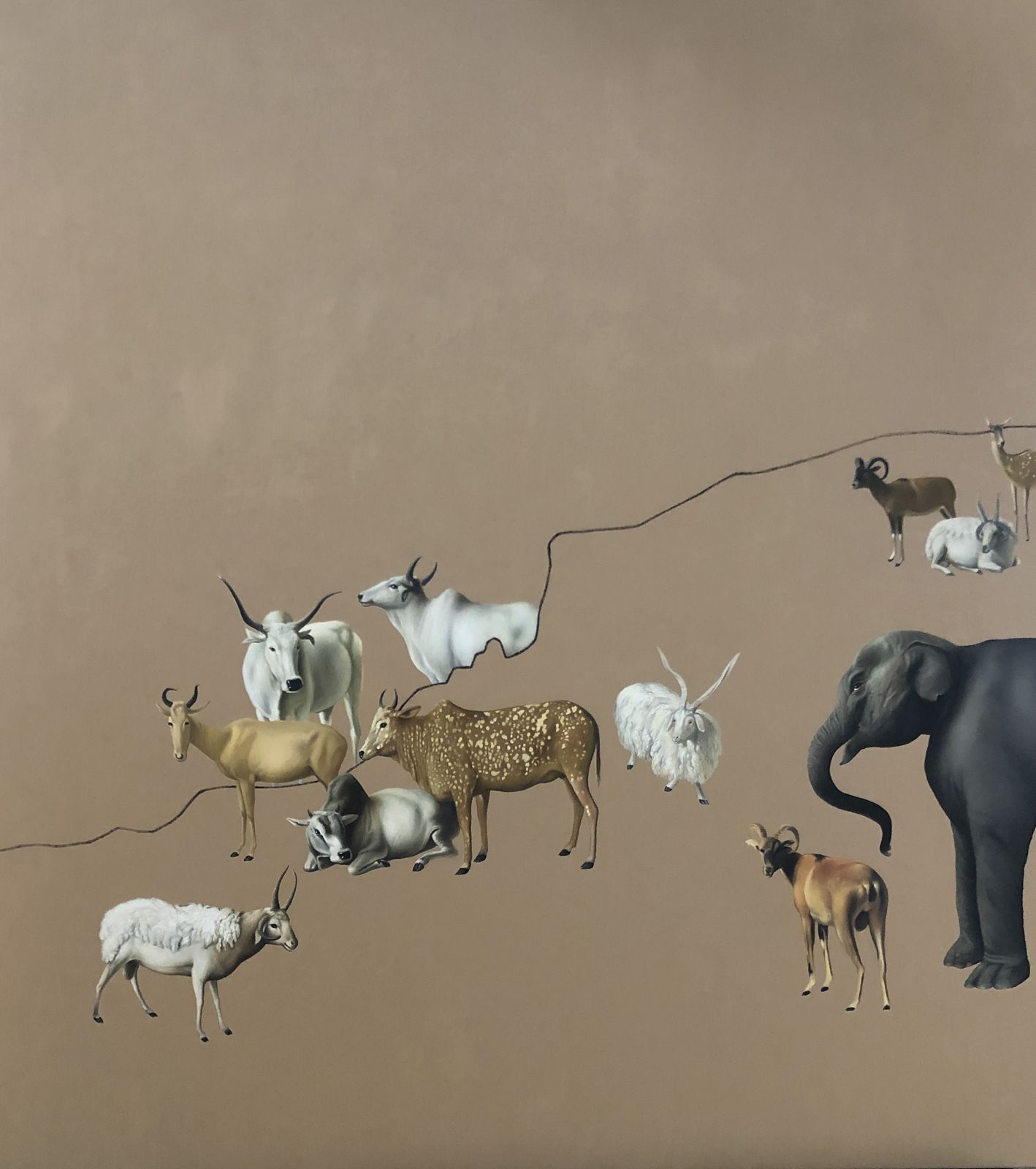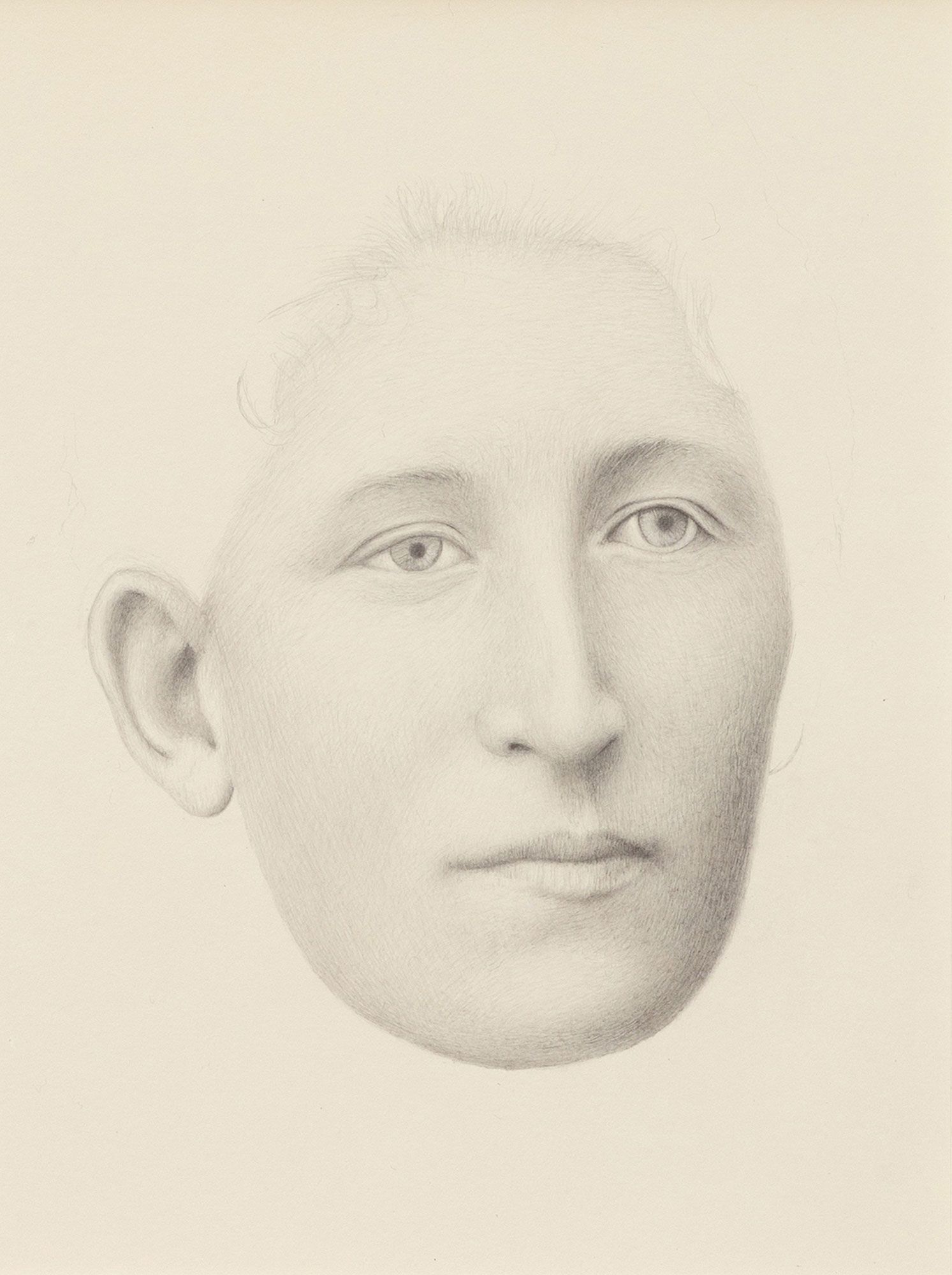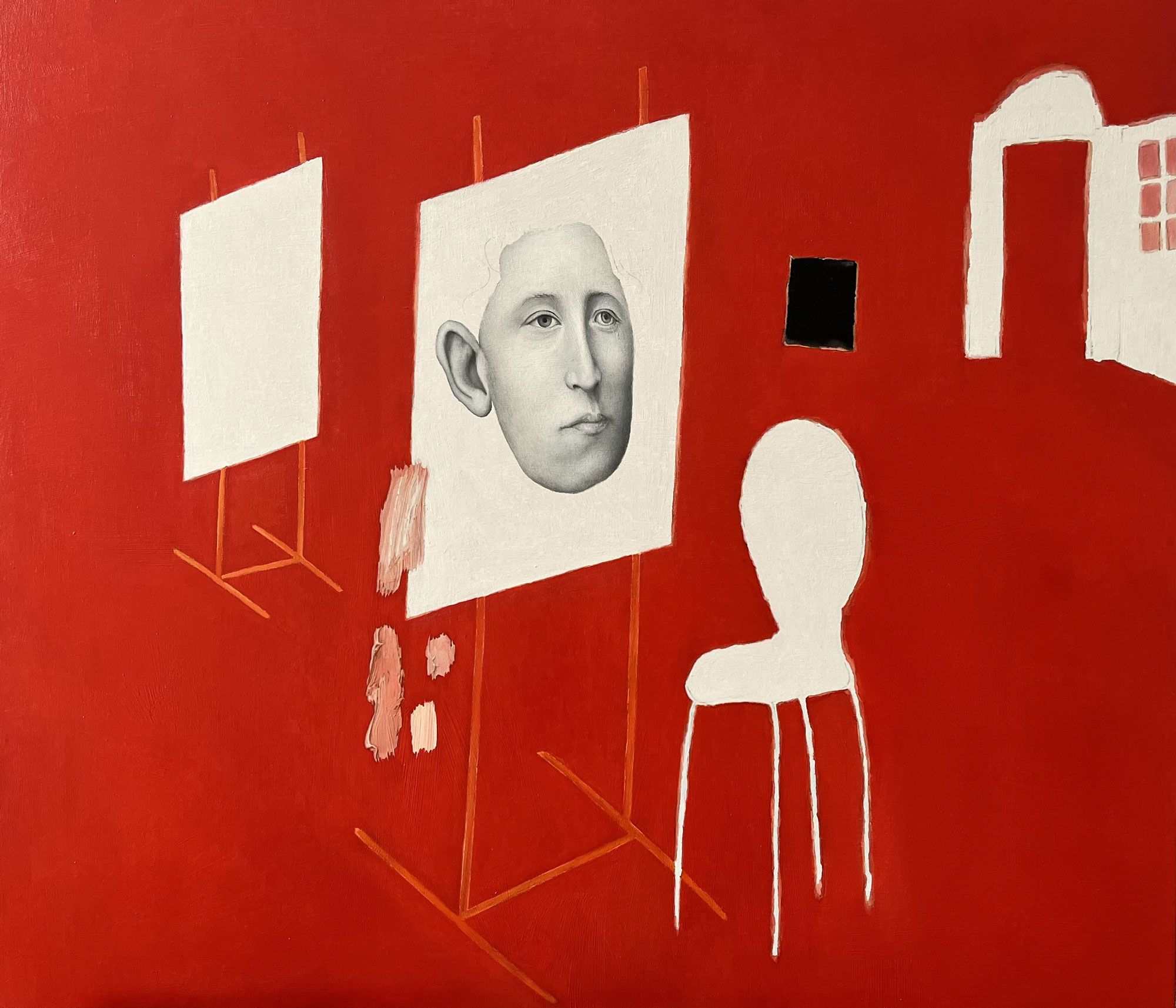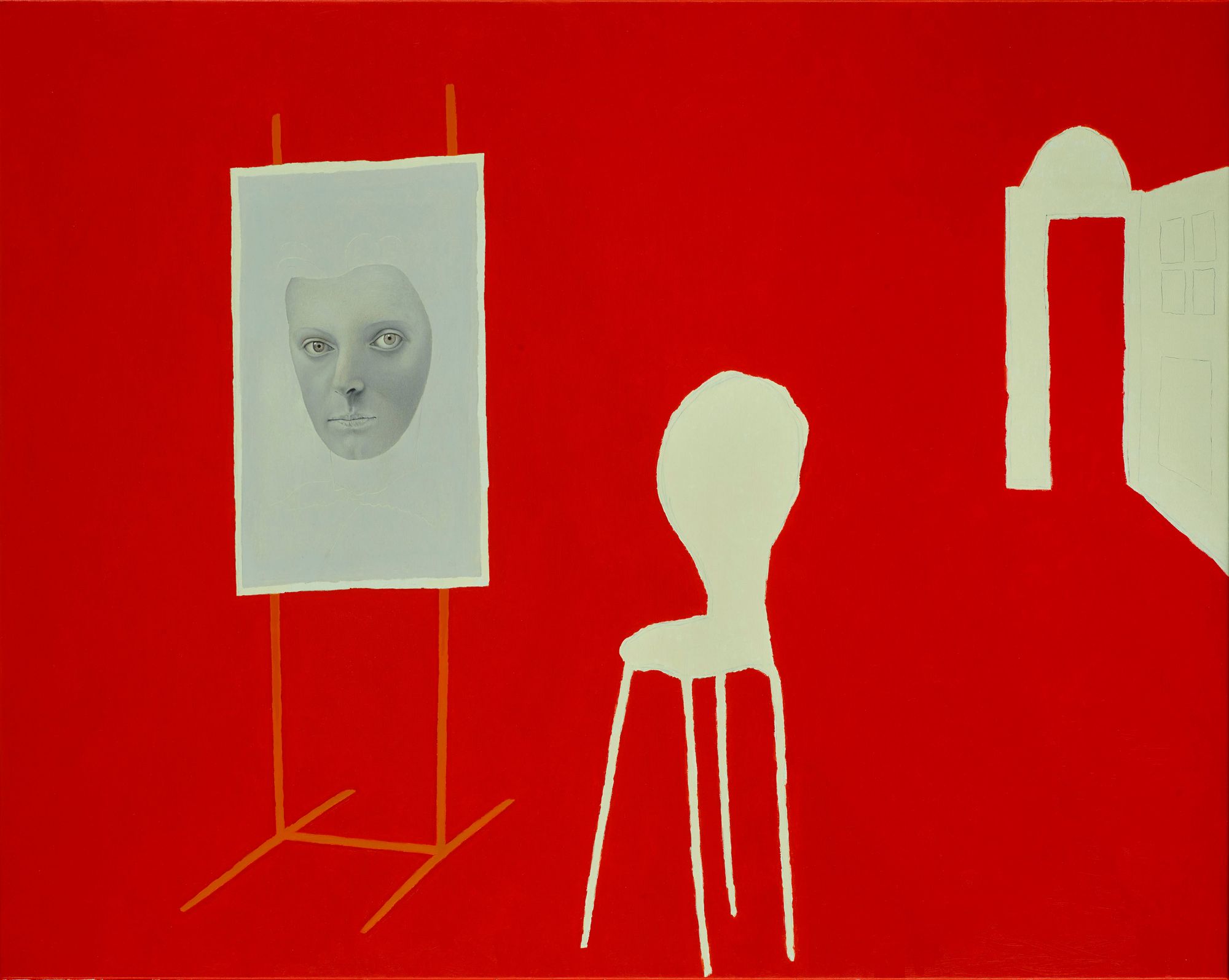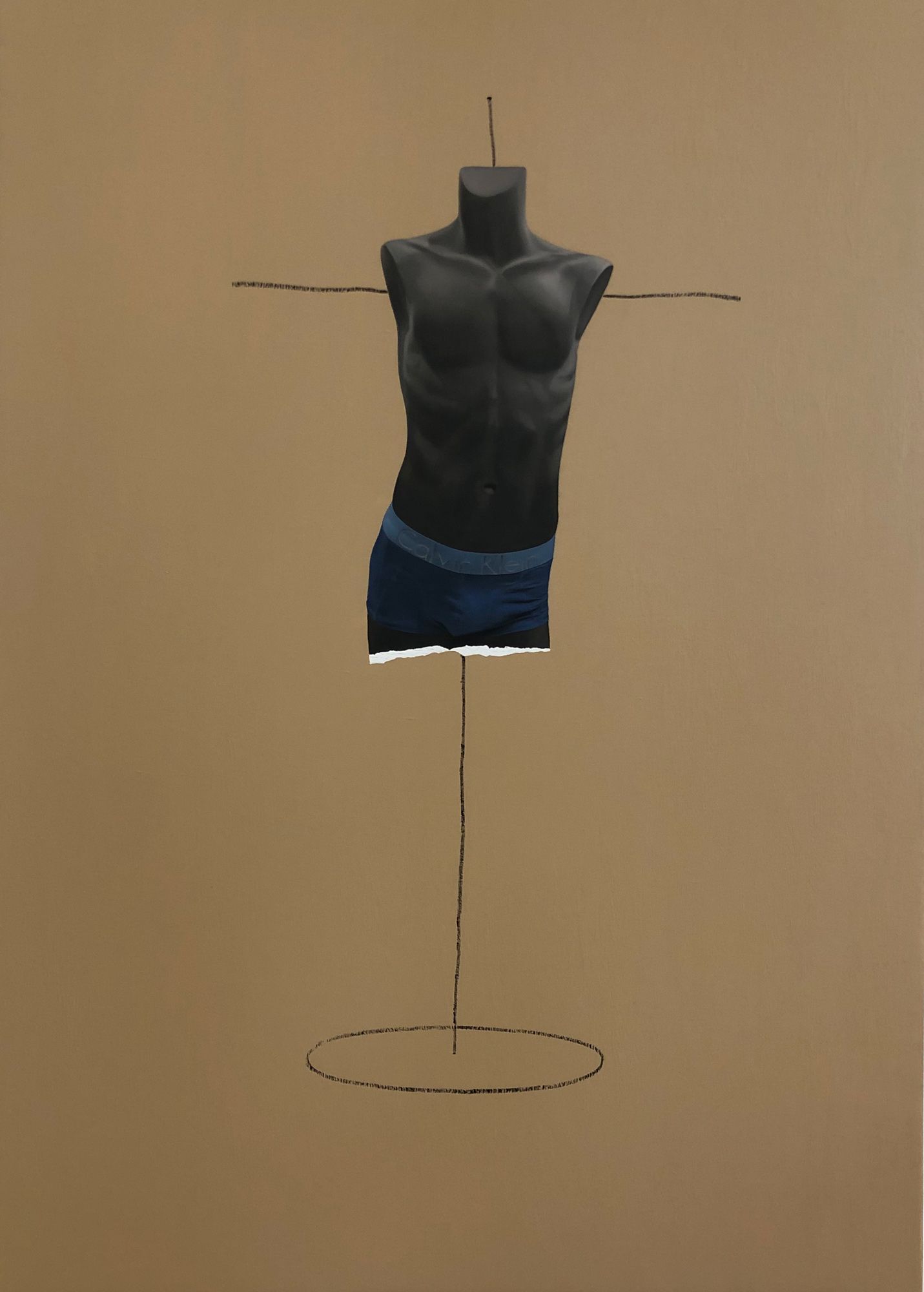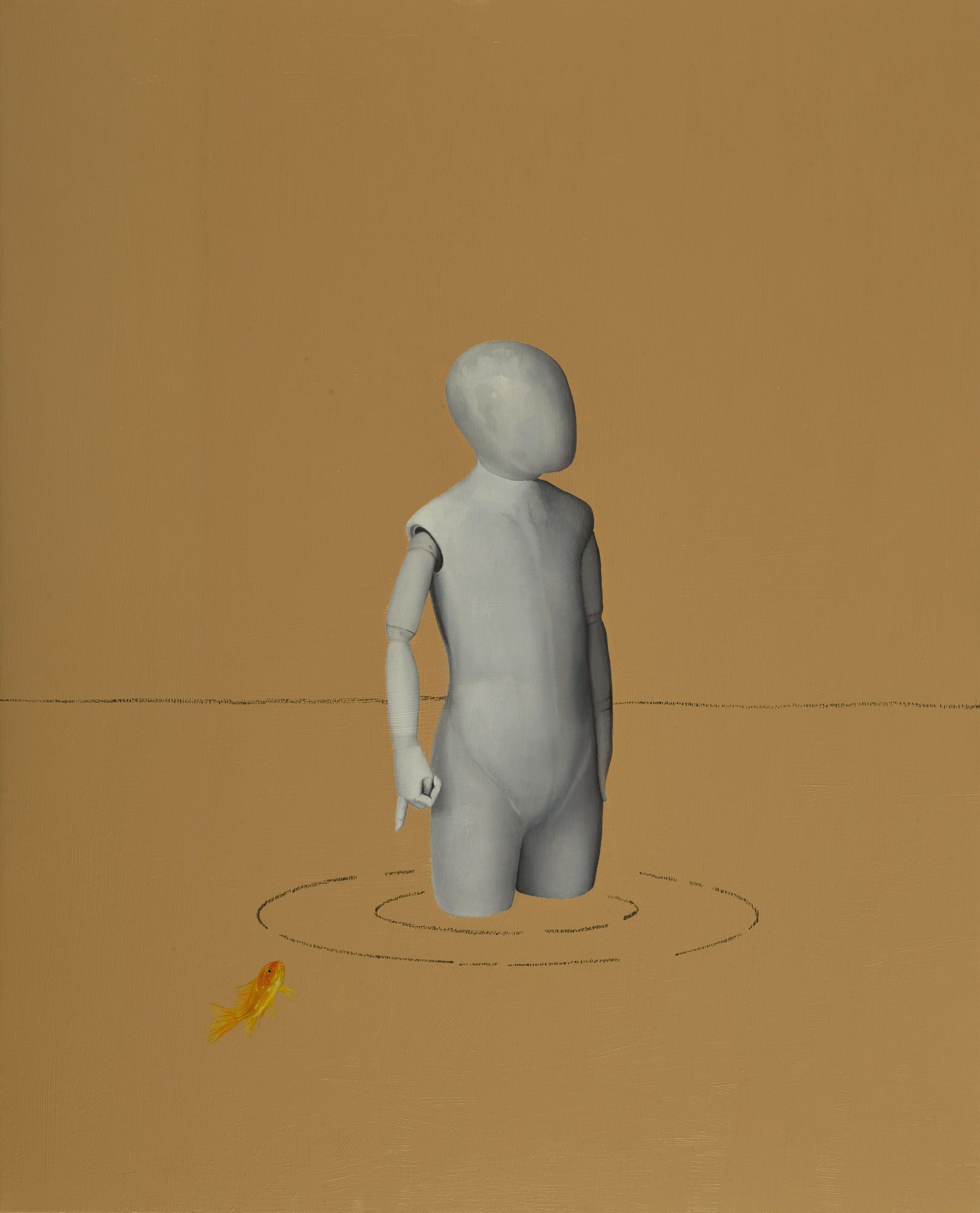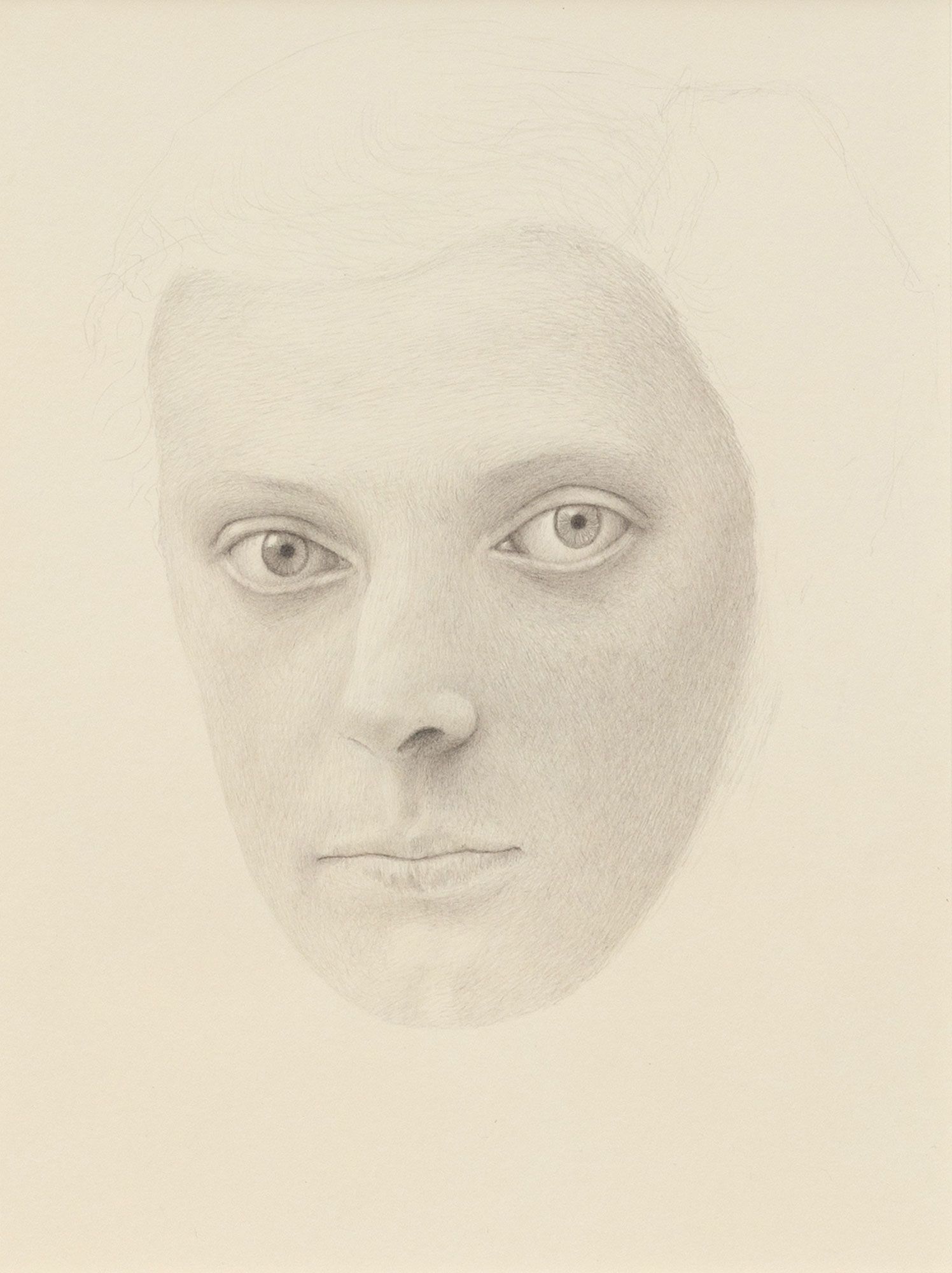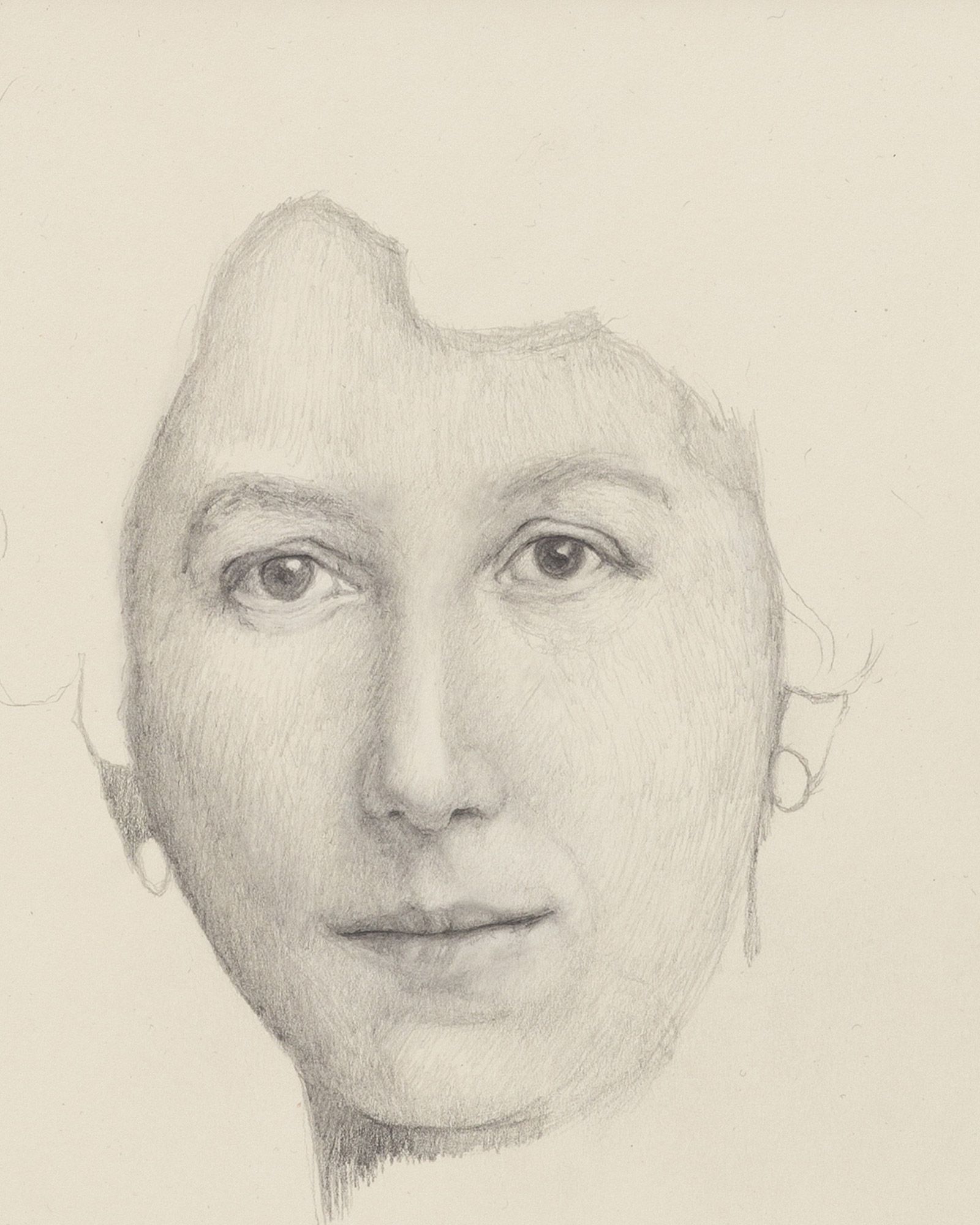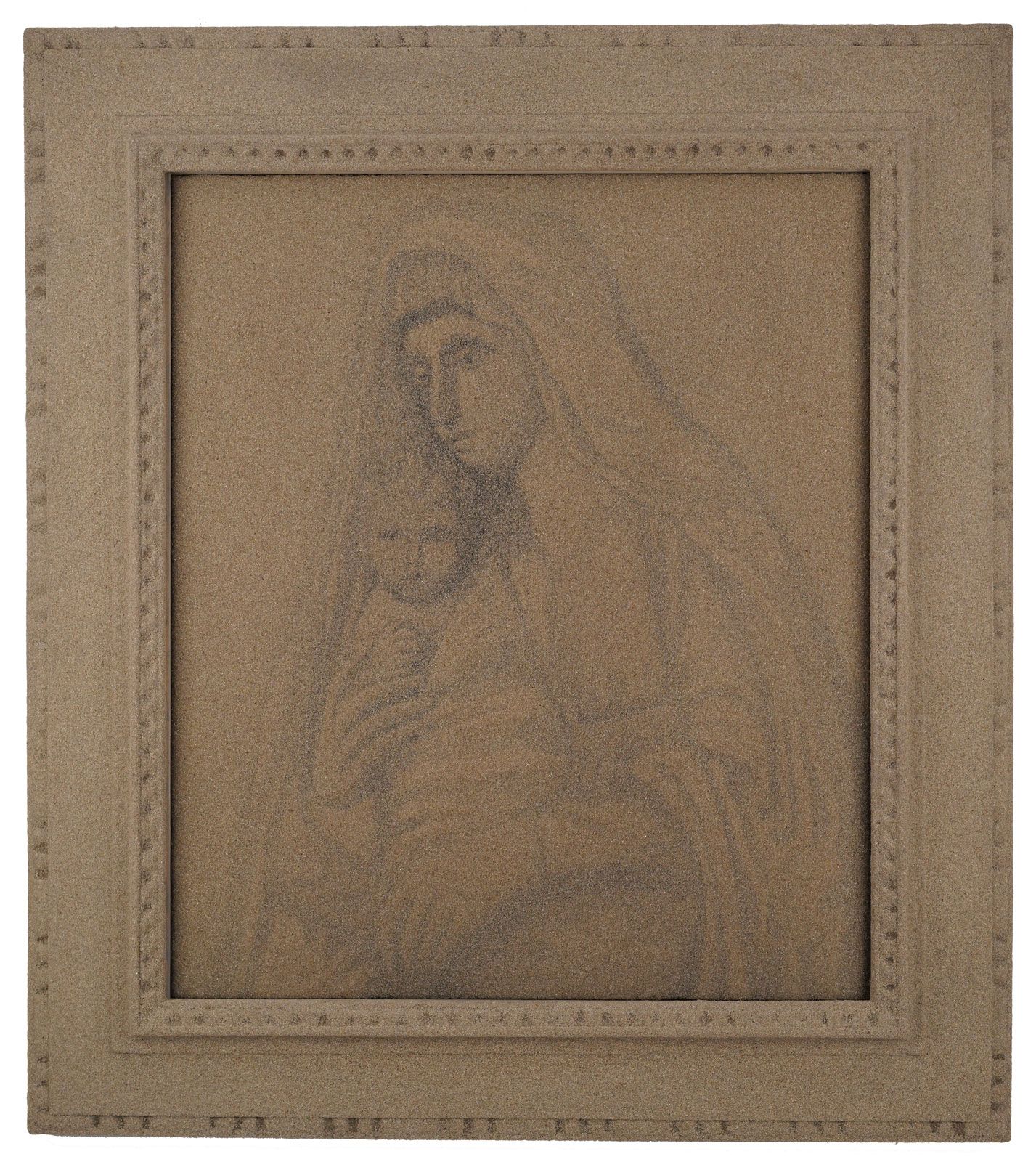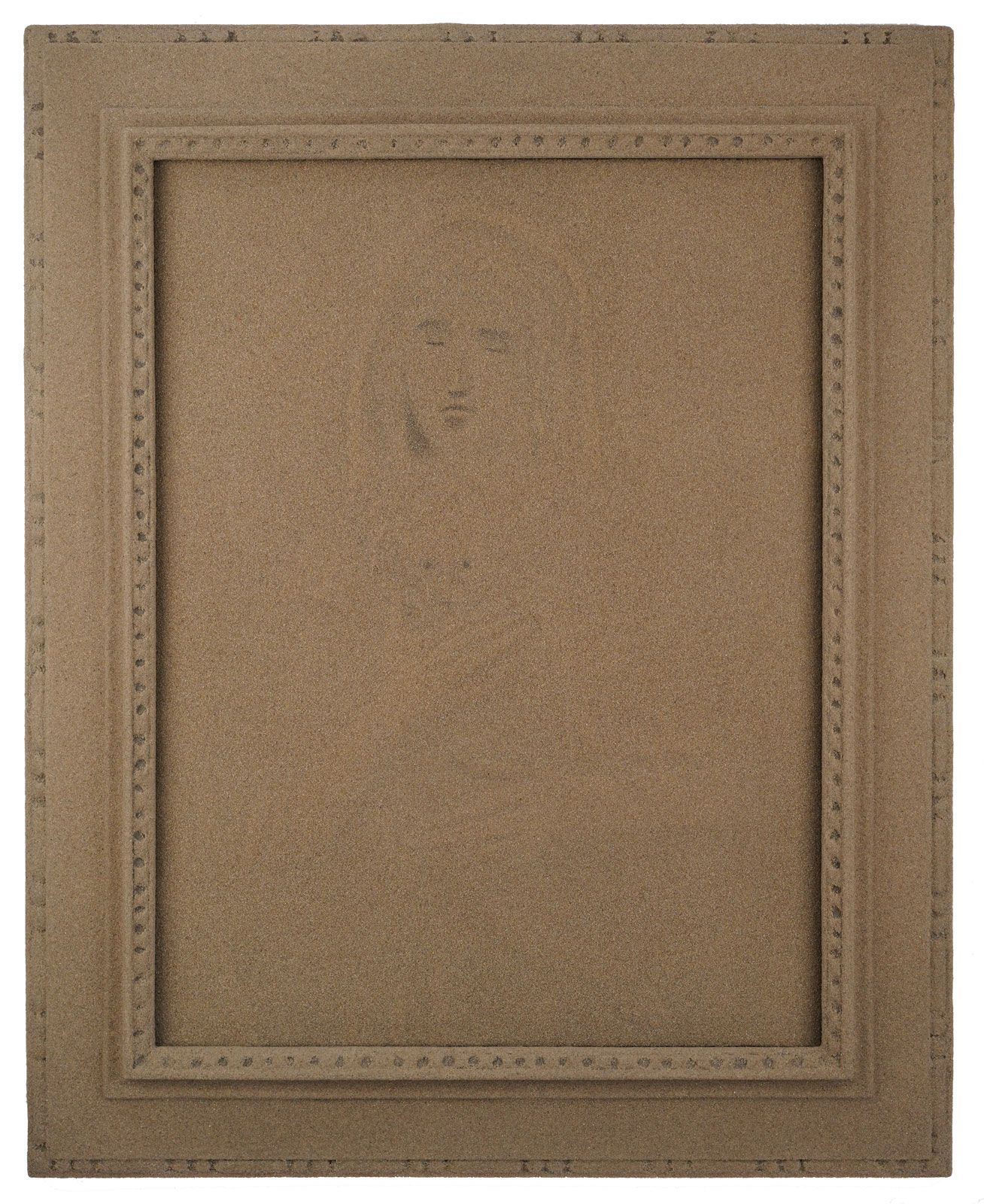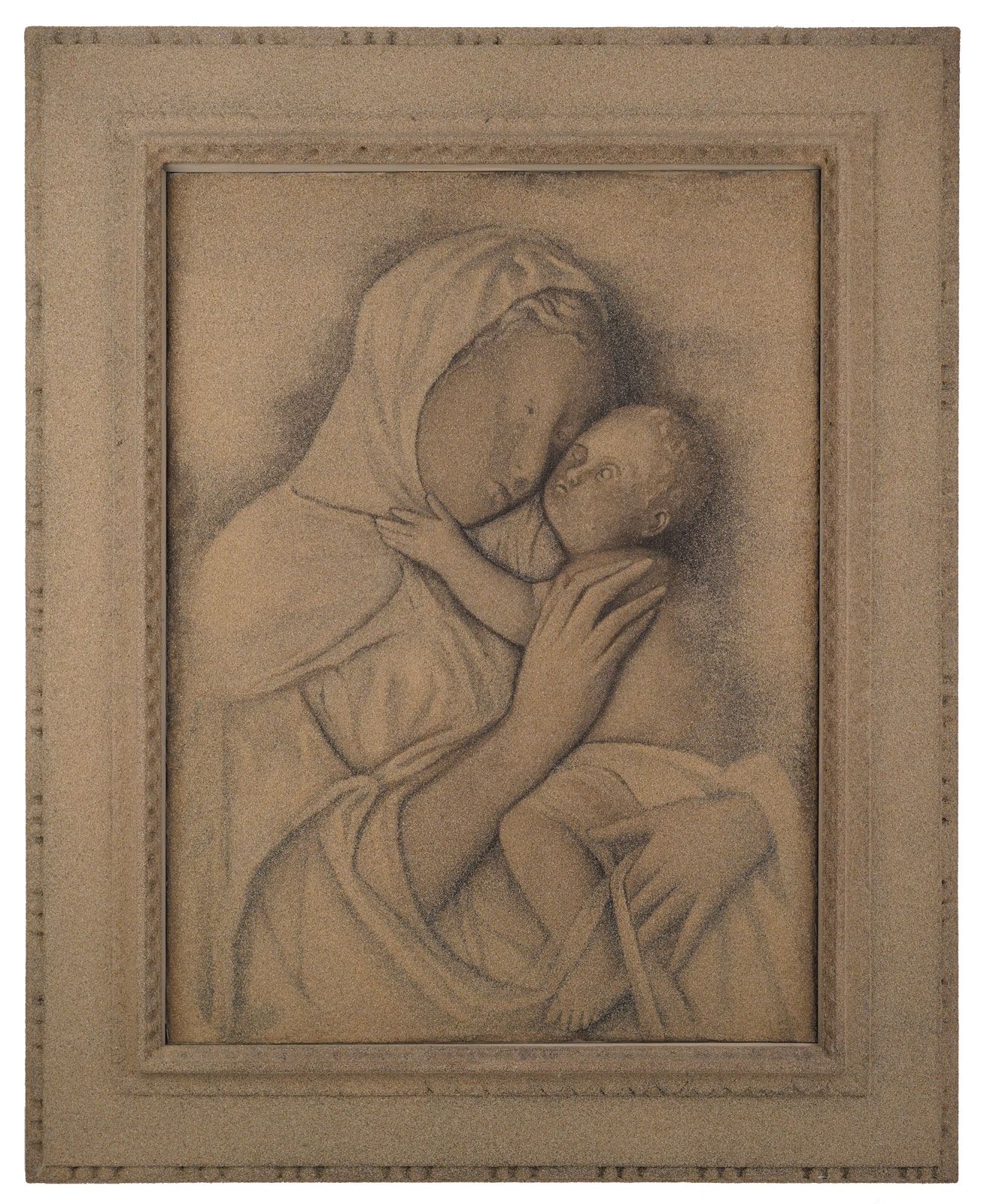A landscape without time. Figures without history. In Vermillion Sands, Mark Alexander constructs a world at once seductive and estranged - a theatre of stillness where mannequins gesture, suns hang motionless, and symbols repeat with dreamlike inevitability.
The series draws inspiration from J.G. Ballard’s stories of artificial glamour and emotional drift. But rather than illustrate those narratives, the paintings operate like echoes - surfaces where past, future, and fiction collapse into a single, sunlit loop.
Here, intimacy is rehearsed but never felt. Portraits are staged, then evacuated. Bodies appear ideal, smooth, even desirable - yet their poise conceals absence. These are not people, but proxies. Not memories, but models.
The compositions are meticulous, often carrying a sense of symmetry - not in exact form, but in balance, poise, and control. Whether rendered in quartz sand, oil paint, or the clinical palette of simulation, each work holds the viewer at a distance. We are not invited in. We are made to observe.
Are they a warning of some future - evacuated, automated, eerily pristine? Or a quiet celebration of the digital age to come? The paintings refuse to decide. In Vermillion Sands, the line between display and disappearance thins. Beauty lingers, but meaning flickers. What remains is a vision of a world rehearsing itself - endlessly composed, already abandoned.
Exhibited: Love Between The Atoms. SAUVAGE, Düsseldorf, Germany 2021
Read more about:
